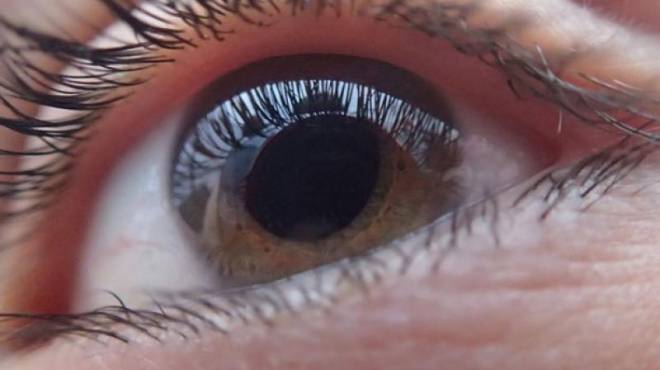Washington: Specific inherited genetic differences may be linked to increased risk for eye cancer that arises from pigment cells that determine eye colour, a
new study has found for the first time.
Uveal melanoma is a cancer of the eye involving the iris, ciliary body, or choroid (collectively referred to as uvea). Tumours arise from the pigment cells that reside in the uvea. Previous clinical data suggests uveal melanoma is more
common in Caucasians and individuals with light eye colouration; however, the genetic mechanisms underlying this cancer’s development were largely unknown.
The study provides first evidence of a strong association between genes linked to eye colour and development of uveal melanoma. “This is a very important discovery that will guide future research efforts to explore the interactions of these pigmentary genes with other genetic and environmental risk factors in cancers not linked to Sun exposure, such as eye melanoma,” said Mohamed Abdel-Rahman of Ohio State University.
“This could provide a paradigm shift in the field. Our study suggests that in eye melanoma the pigmentation difference may play a direct cancer-driving role, not related to sunlight protection,” said Abdel-Rahman. Unlike other solid tumours, there has been limited progress in understanding the contribution of genetic risk
factors to the development of uveal melanoma, primarily due to the absence of comprehensive genetic data from patients as the large sample cohorts for this rare cancer type have not been available for research.
To overcome these limitations, researchers analysed samples from more than 270 patients with uveal melanoma. Since there is a known connection between eye melanoma and skin cancer, researchers sought to determine whether there
were commonly shared genetic factors between both diseases, as the inherited genetic risk of skin melanoma has been more extensively explored in previous medical literature.
The team analysed 29 inherited genetic mutations previously linked with skin melanoma to determine if there was an associated risk of uveal melanoma.
This analysis showed that five genetic mutations were significantly associated with uveal melanoma risk. The three most significant genetic associations occurred in a genetic region that determines eye colour.
“Genetic susceptibility to uveal melanoma has been traditionally thought to be restricted only to a small groups of patients with family history,” said Tomas Kirchhoff, from the New York University School of Medicine. “Now our strong data shows the presence of novel genetic risk factors associated with this disease in a general population of uveal melanoma patients,” said Kirchhoff.
“This data is also important because it indicates – for the first time – that there is a shared genetic susceptibility to both skin and uveal melanoma mediated by genetic determination of eye colour,” he said. The study appears in the journal Scientific Reports.
PTI

